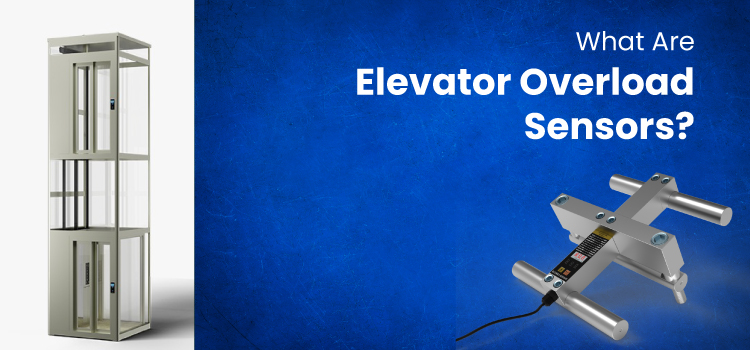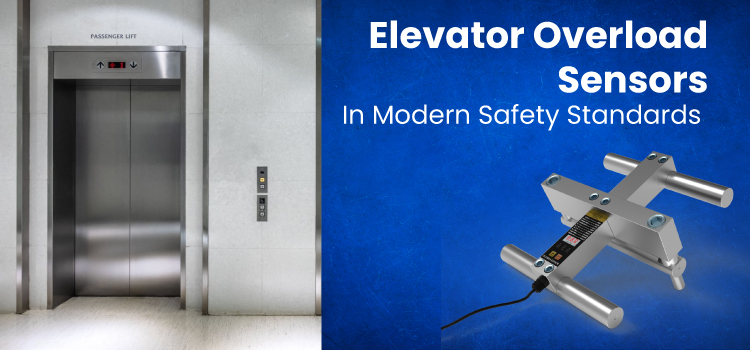The Importance of Elevator Overload Sensors in Modern Safety Standards
In today’s era, many individuals are concerned about the smooth operation of elevators. But, as the elevator leads individuals to different floors, these have to operate with certain weight limits. With this in mind, elevators may not function properly when many individuals are present in the lift’s car. Here’s when overload sensors can prevent accidents and malfunctions. So, in this article, we shall cover more about elevator overload sensors and their importance.
What Are Elevator Overload Sensors?

Elevator overload sensors are referred to as safety devices that detect the occurrences of exceeding the weight capacity. If the load increases beyond a certain limit, then the sensor triggers an alert. In those instances, the elevator will stop working automatically. Thus, it will ensure safety for the passengers and prevent damage to the elevator system. This aspect increases the life span of the elevator and its components.
Why Are Overload Sensors Critical?
Setting up overload sensors is critical for many reasons. Let’s check more about the main reasons ahead.
1. Passenger Safety
Overload sensors are essential for the safety of the individuals using the lift. Once the lift becomes overcrowded, the sensor will detect the situation and stop the elevator. This helps to mitigate hazards like elevator malfunctioning or getting stuck. Passengers will also not encounter any incidents due to sudden breakdown.
2. Equipment Protection
Overload sensors play a role in protecting the main components of an elevator. Excessive weight will not strain the motor, safety components and cables, and other safety components. Hence, the builder doesn’t have to bother about costly repairs and downtime due to equipment malfunction.
3. Operational Efficiency
When there’s an overload sensor for an elevator, it can help maintain operational efficiency. By preventing overloading, the sensors will also ensure that the lift runs smoothly. This mitigates the probability of service disruptions and reduces energy consumption. Individuals who use the lift often can then expect reliable service.
Modern Safety Standards and Compliance
When builders install modern elevators, the overall safety is governed by global standards like ASME, EN81, and ISO. Such standards help manufacturers to design and develop the lifts effectively. In fact, many elevator manufacturers can also design lifts to ensure that they are reliable and safe.
Moreover, among the key features of the lifts, you will come across emergency communication systems, automatic door reversal, and overload protection. These align with the global standards and ensure safe operation. Risks are also minimized when any incident occurs accidentally.
Under the ISO standards, the construction team has to maintain structural integrity and offer additional support to the lift’s components. People must also be provided with emergency stops and communication systems in case something happens suddenly. On the other hand, EN81 standards state that lifts must have alarm systems and emergency lighting.
These are useful whenever lifts don’t function properly. To prevent accidents, the standards also present guidelines for regular monitoring and controlling the load. Beyond this, ISO 25745, ASME A17.1, and EN81 standards mandate the installation of overload sensors for an elevator.
Why upgrade older elevators with overload sensors?
Many elevator manufacturers are upgrading old lifts with overload sensors. This is essential to ensure compliance with the current safety regulations. While such sensors play their role, they can further prevent damage to different components. By installing such sensors, building owners can also secure the lift from excess wear and tear. Apart from ensuring that the lift operates efficiently, the sensors also help to extend the lifespan of the elevators. Moreover, the maintenance costs are also considerably reduced as people use the lift often.
Features to Look for in an Overload Sensor
Many features have to be considered before choosing an overload sensor for an elevator. Let’s check these ahead.
1. High Precision and Reliability
While you’re selecting an overload sensor, it should be reliable, and it must be precise in its functionality. To prevent overloading, the sensor must detect the weight variations and make sure that the lift functions within the limit. Moreover, the sensor should perform consistently without any failure.
2. Compatibility with Various Elevator Models
Before you choose the sensor, you must ensure that it is compatible with different elevator models. The sensor must also be adaptable to diverse elevator systems and work well with the technologies. So, when it’s time to upgrade an elevator, the builder doesn’t have to worry about compatibility issues.
3. Ease of installation and maintenance
Apart from the factors stated above, the sensor must be easier to install. The builder and his team must not spend time making complex modifications during the setup. Moreover, the sensors must be easy to maintain, and it must deliver performance for a long time.
4. Advanced features like digital displays and alarms
Lift overload sensors must have advanced features like digital displays and alarms. While a digital display monitors the current weight load, it can also ensure safety. On the other hand, when an alarm is integrated with the lift, then it will alert individuals immediately once the load exceeds. At that point in time, the team can address the issue promptly.
5. Benefits of Using Advanced Overload Sensors
There are two main benefits of setting up advanced overload sensors for elevators. Let’s quickly go through these benefits.
(i) Improved User Experience and Trust
When the elevator features advanced overload sensors, it ensures smooth operations. With features such as real-time monitoring and digital displays, individuals can be aware of the issues ahead of time. This builds trust and enhances the overall experience when the lift continues to operate.
(ii) Lower Maintenance Costs
By using advanced overload sensors, building owners can lower the maintenance costs. This is because such sensors prevent overloading and cause strain on the lift’s components. Way ahead, as the parts are not subjected to any wear and tear, people don’t have to bother about any costly repairs.
Choosing the Right Overload Sensor for Elevators
When you’re about to choose an overload sensor, you have to consider the capacity, brand reputation, and technology. To ensure that overloading is detected accurately, the sensor must be compatible with the lift’s weight limit. The technology of the sensor must also offer reliable real-time monitoring to detect issues with ease. Moreover, it’s essential to choose a sensor from a reputed brand, as these are durable, and they meet the safety standards.
Conclusion
Finally, as time passes by, people across the world will observe significant advancements in case of elevator overload sensors. These sensors will soon be more precise in offering real-time data analytics and monitoring capabilities. This will enable the team to carry out proactive maintenance and detect issues quickly. Additionally, the sensors will feature enhanced connectivity and thereby enable teams to communicate with numerous systems. Owing to smart technology, the lifts will also be able to perform basic maintenance tasks on their own. Issues will also be detected by the lifts as they evolve.
If you’re seeking a high-quality lift for your client’s project, then connect with MAS Industries today. As our team incorporates modern technology in various elevator designs, we assure reliability and safety.
FAQs
1. What does a load sensor do on an elevator?
The main function of a lift overload sensor is to measure the weight inside the elevator’s car. In case the weight of individuals crosses the limit, then the sensor will alert the building management team.
2. What is an overload alert on the elevator?
An elevator’s overload alert is a feature that warns individuals that the lift is carrying a lot of weight. Once the lift is overloaded, a sensor will stop the elevator automatically. Besides, the sensor can also notify passengers that the lift is overloaded.
3. What is overload in an elevator?
An overload in an elevator occurs when the overall weight of individuals exceeds the usual capacity. This, eventually, prevents accidents, breakdowns, and failure of various lift components.
4. What is the sensor in the elevator?
You will come across many sensors in an elevator. These include weight sensors, door sensors, speed sensors, and more. In addition, manufacturers are incorporating an overload sensor while designing lifts.




Leave a Reply